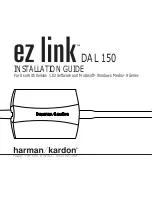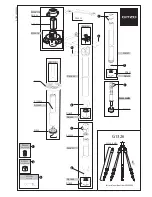
1
Chapter 1
Introduction
Description
The
DPS
Power
Sensors
are
intended
for
use
in
coaxial
transmission
lines
of
50
ohm
nominal
impedance.
The
sensors
utilize
elements
in
order
to
make
power
measurements.
Each
element
has
an
arrow
on
it
that
represents
the
direction
in
which
it
measures
power.
The
elements
ignore
power
in
the
opposite
direction
with
a
directivity
of
at
least
25
dB.
The
DPS
series
can
make
power
measurements
using
either
43
type
or
APM/DPM
elements,
and
the
readings
available
vary,
based
on
which
elements
are
being
used.
Since
the
DPS
uses
two
elements,
it
can
measure
the
quality
of
the
system
by
comparing
the
forward
and
the
reflected
power.
This
is
usually
presented
in
the
form
of
VSWR
(voltage
standing
wave
ratio)
or
Return
Loss.
Element Types
43 Type Elements
The
43
type
elements
are
normally
used
to
measure
peak
power.
These
elements
can
measure
the
peak
power
of
a
system
with
an
accuracy
of
+/
‐
8%
of
full
scale
as
long
as
the
signal
meets
the
following
requirements:
At
least
15
pulses
per
second
(PPS
Minimum
pulse
width
of
15
µs
(800
ns
if
frequency
is
greater
than
100
MHz)
Minimum
Duty
Cycle
of
0.01%
In
addition,
43
type
elements
can
be
used
to
measure
average
power
in
signals
with
a
peak
‐
to
‐
average
ratio
close
to
1,
like
a
CW
or
FM
signals.
In
these
cases,
the
average
power
is
measured
with
an
accuracy
of
+/
‐
5%
of
full
scale.
APM/DPM Elements
The
APM/DPM
elements
are
used
to
measure
true
average
power.
True
average
power
means
the
sensor
provides
equivalent
heating
power
of
the
signal,
regardless
of
modulation
or
number
of
carriers.
These
elements
can
measure
average
power
with
an
accuracy
of
+/
‐
5%
of
reading
from
full
scale
down
to
2.5%
of
full
scale.
Note:
The
equivalent
heating
power
is
dependent
on
the
duty
cycle
of
a
signal.
If
a
system
puts
out
50
watts
with
a
50%
duty
cycle,
the
APM/DPM
elements
will
measure
25
watts.









































